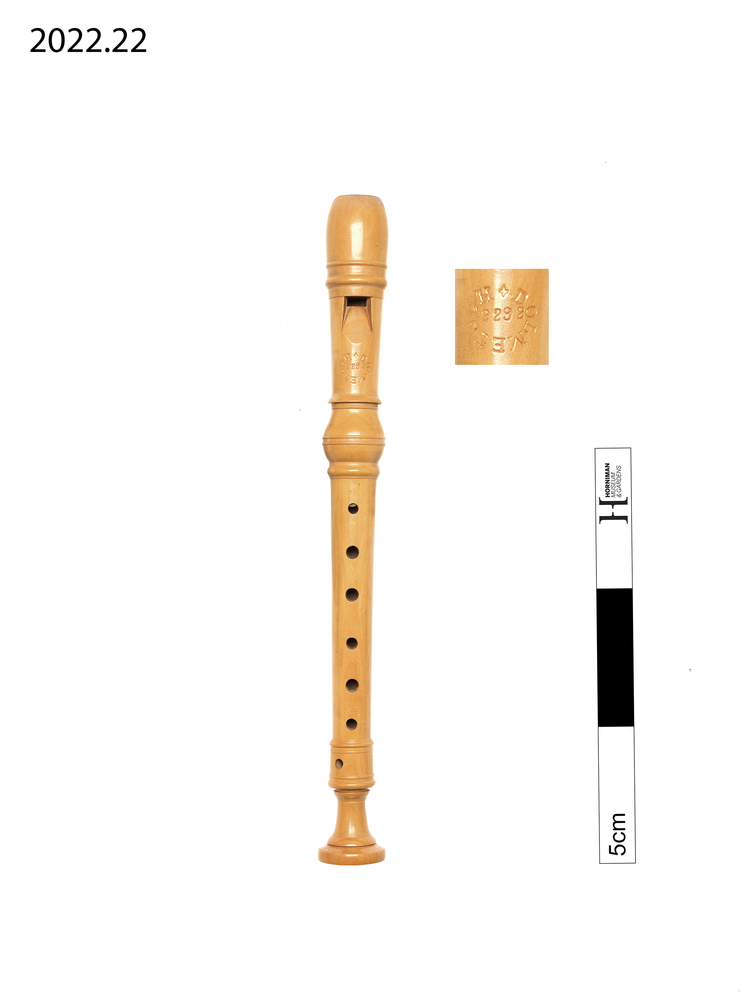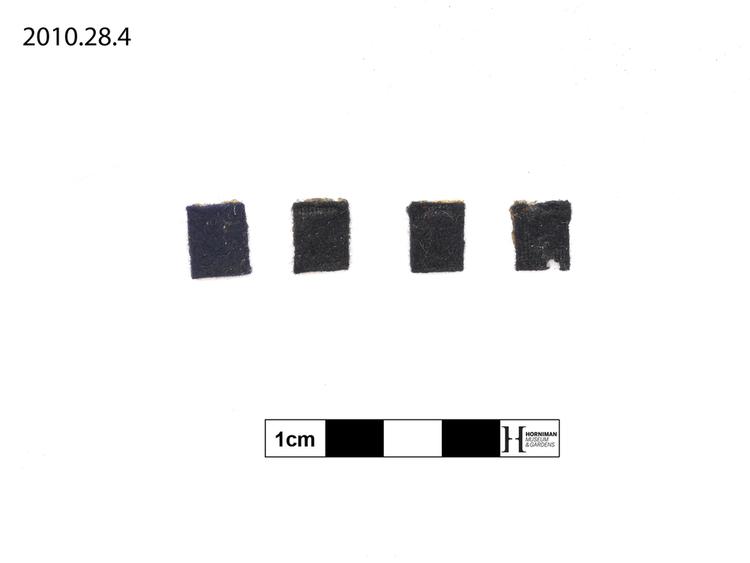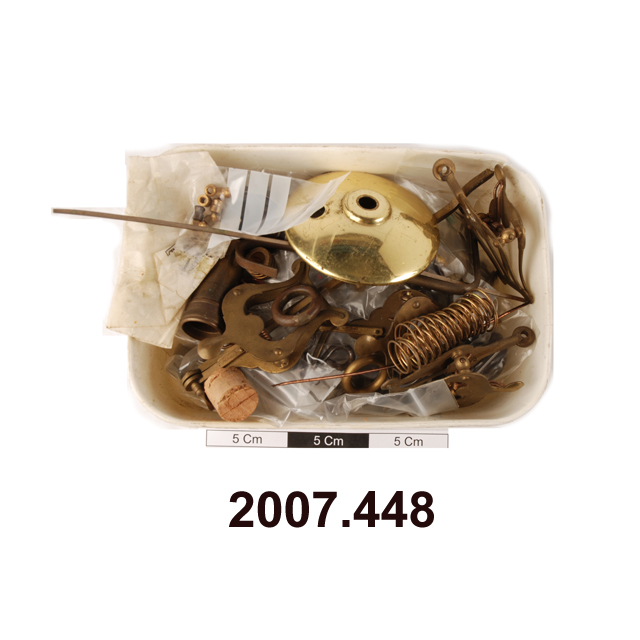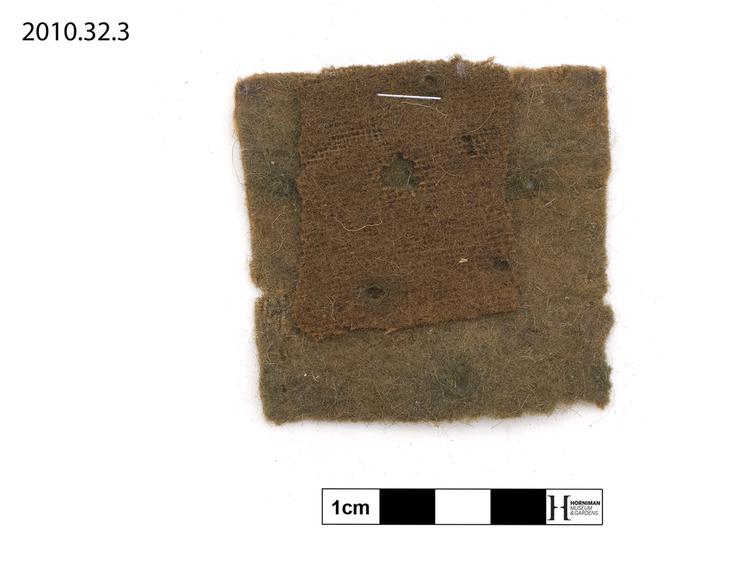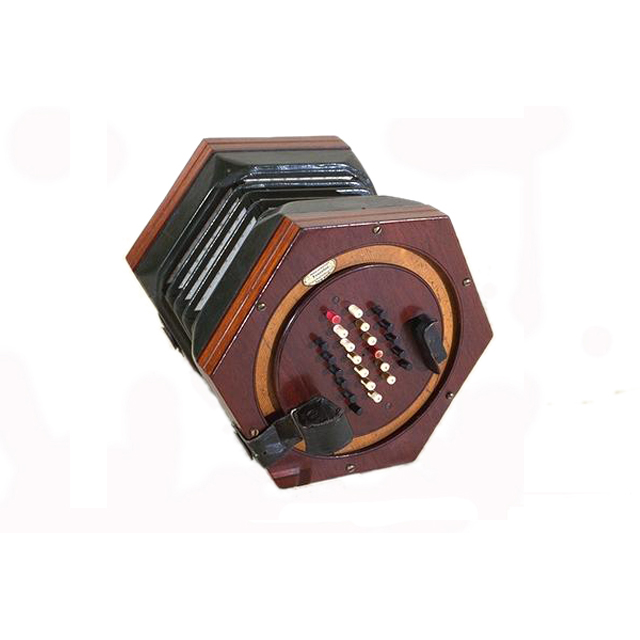
English system concertina. Serial number 677. Oval paper label: 'By His Majesty's Letters Patent, C. Wheatstone, Inventor, 20 Conduit St., Regent St., London.' Mahogany ends built to standard width: 6.25 inches between parallel sides. The ends are plain, without fretwork, but in its place a circular section of the mahogany has been cut away, exposing the pine backing, for the purpose of amplifying the instrument's sound. 48 keys, 24 on each side. Ivory naturals, black accidentals, stamped with note names. Original green leather straps with nickel screws. Four-fold green leather bellows with gold circle and dot papers. Square-end nickel reeds. Later hexagonal rosewood case.
The following information is recorded regarding the purchase of this instrument in the ledgers of the Wheatstone concertina factory (http://www.horniman.info): 18 Oct 1843: 48 [buttons] P[lain] Mr J A Novello (C1046, p.23) 18 Oct 1843: 48 [buttons] Mr J A Novello [and in pencil:] Mr Fentum [and in ink on line below:] 131. Mr [Robert or John] Fentum, a Professor of Music listed in the MDRA (Musical Directory, Register and Almanac) [for 1855 or 1853], probably bought this concertina on behalf of Mr J.A. Novello, exchanging it for the instrument with serial number 131. Music dealers often bought in bulk, and it was not unusual for such businessmen to purchase a dozen concertinas in one transaction. Joseph Alfred Novello (1810-1896) was only 19 when he established himself as an independent music publisher. He bought two Wheatstone concertinas: this one in 1843, and serial number 5771 a decade later. It is unclear whether this was for personal use, or to sell on to clients from his own shop. He launched the periodical The Musical Times and Singing Class Circular in 1844. The concertina is classified according to the system of Hornbostel and Sachs as a 'set of free reeds, with flexible air reservoir and keyboard'.



